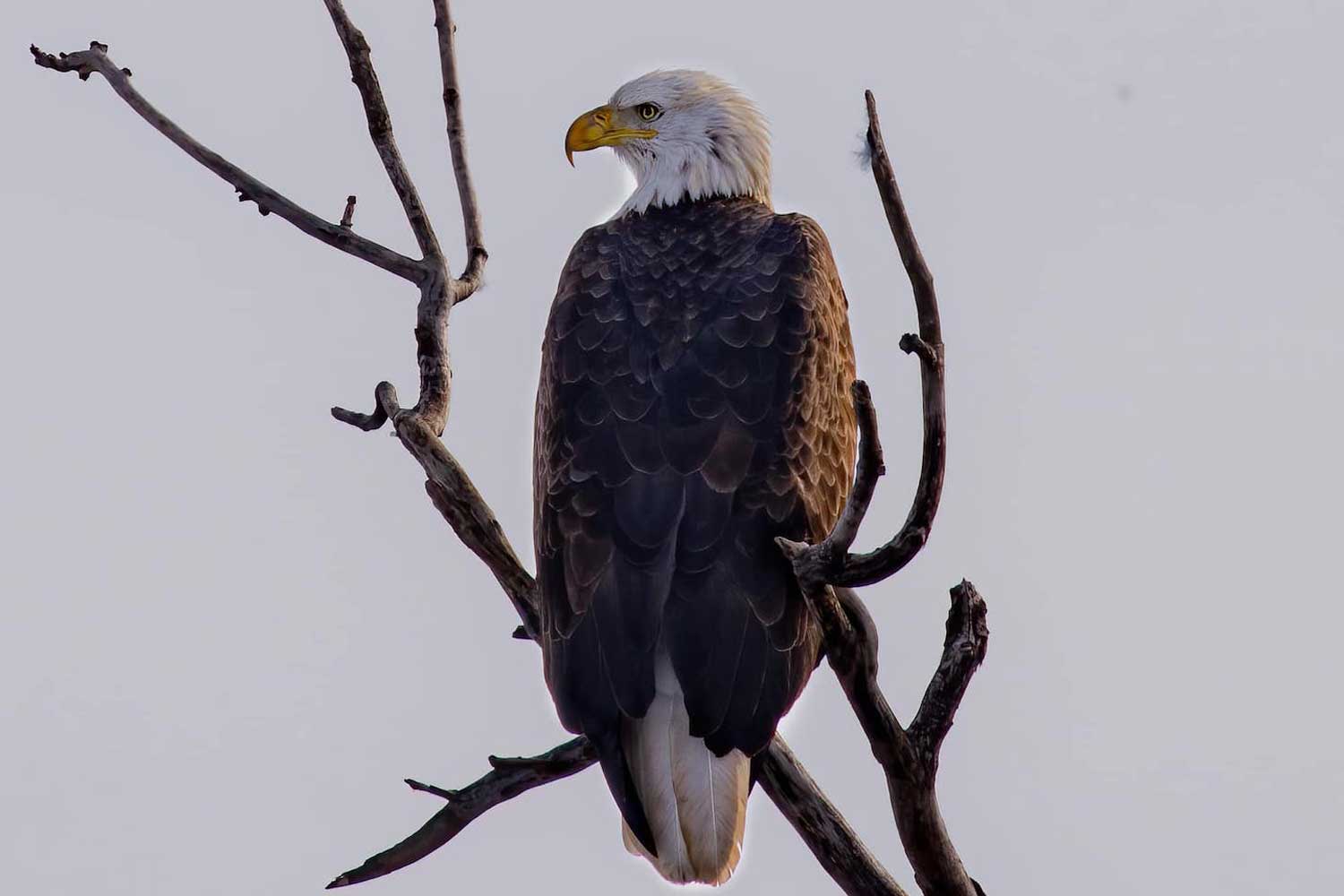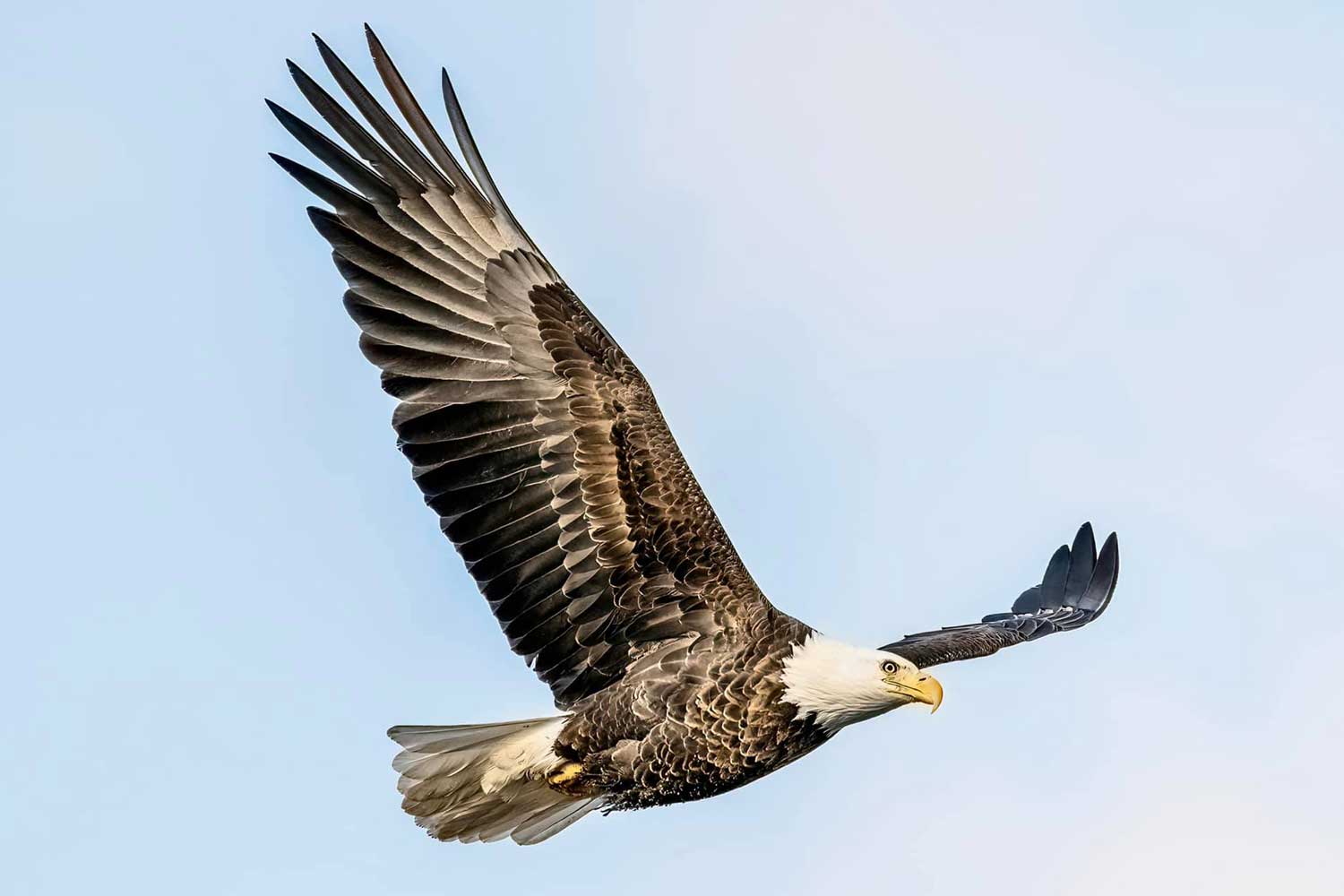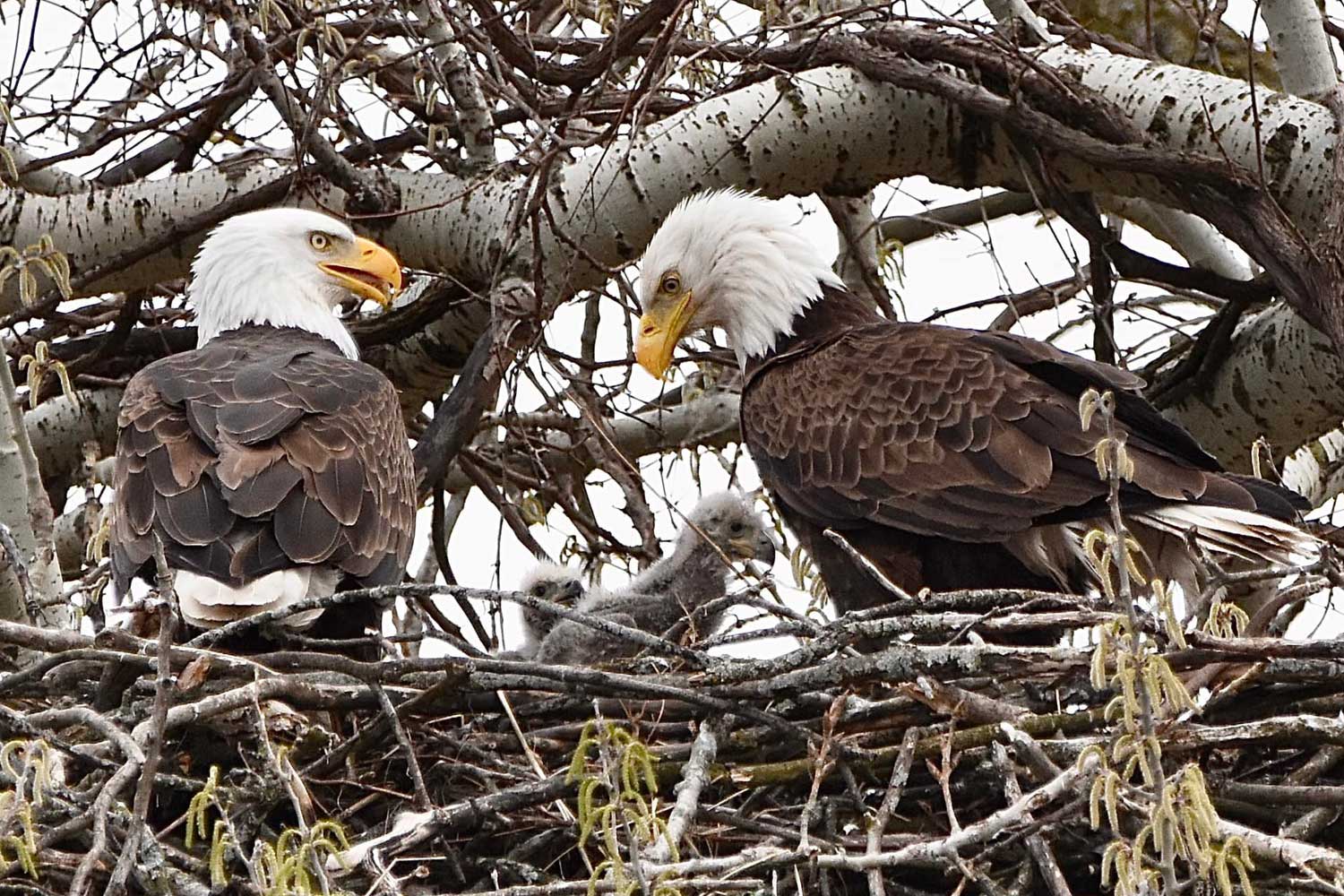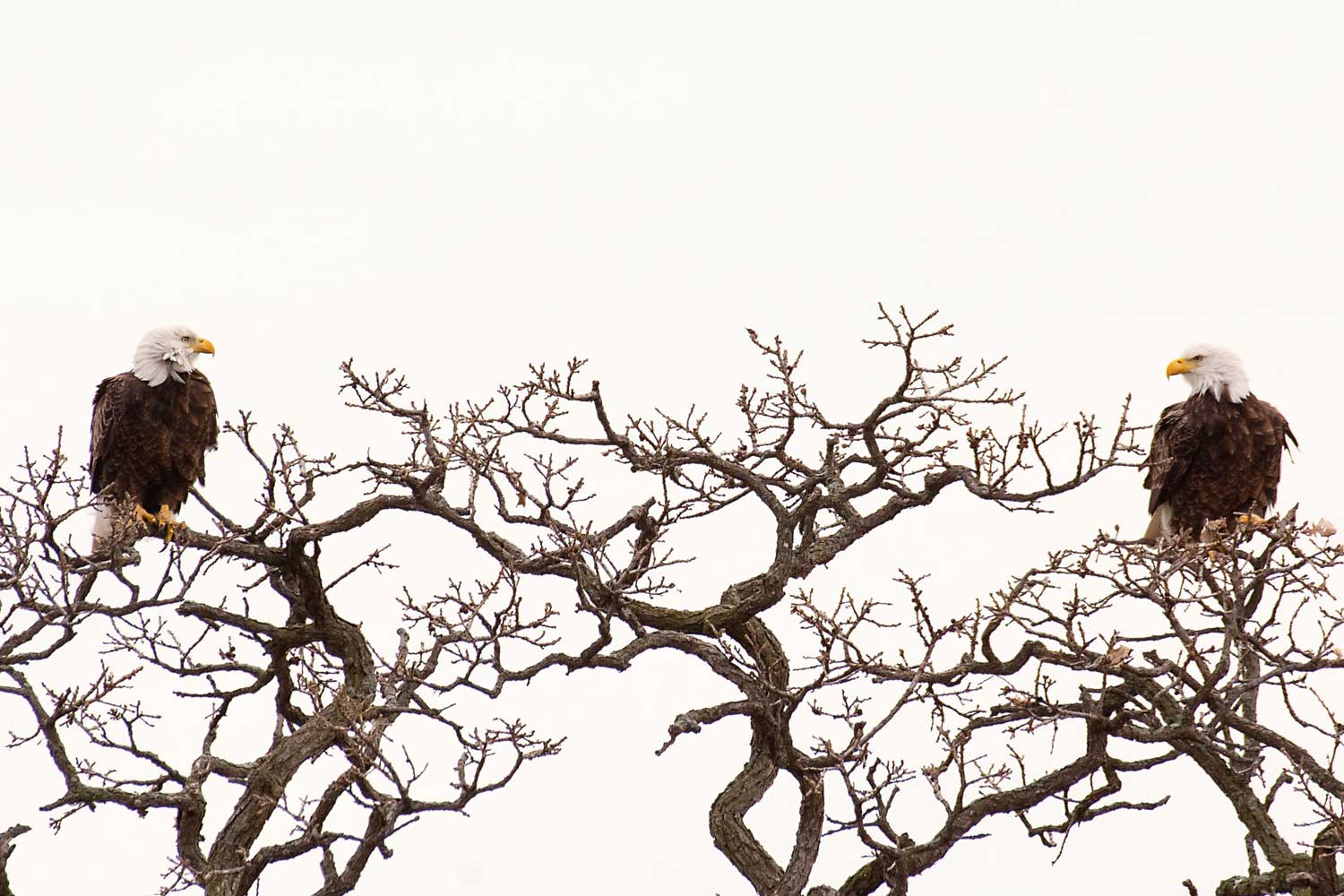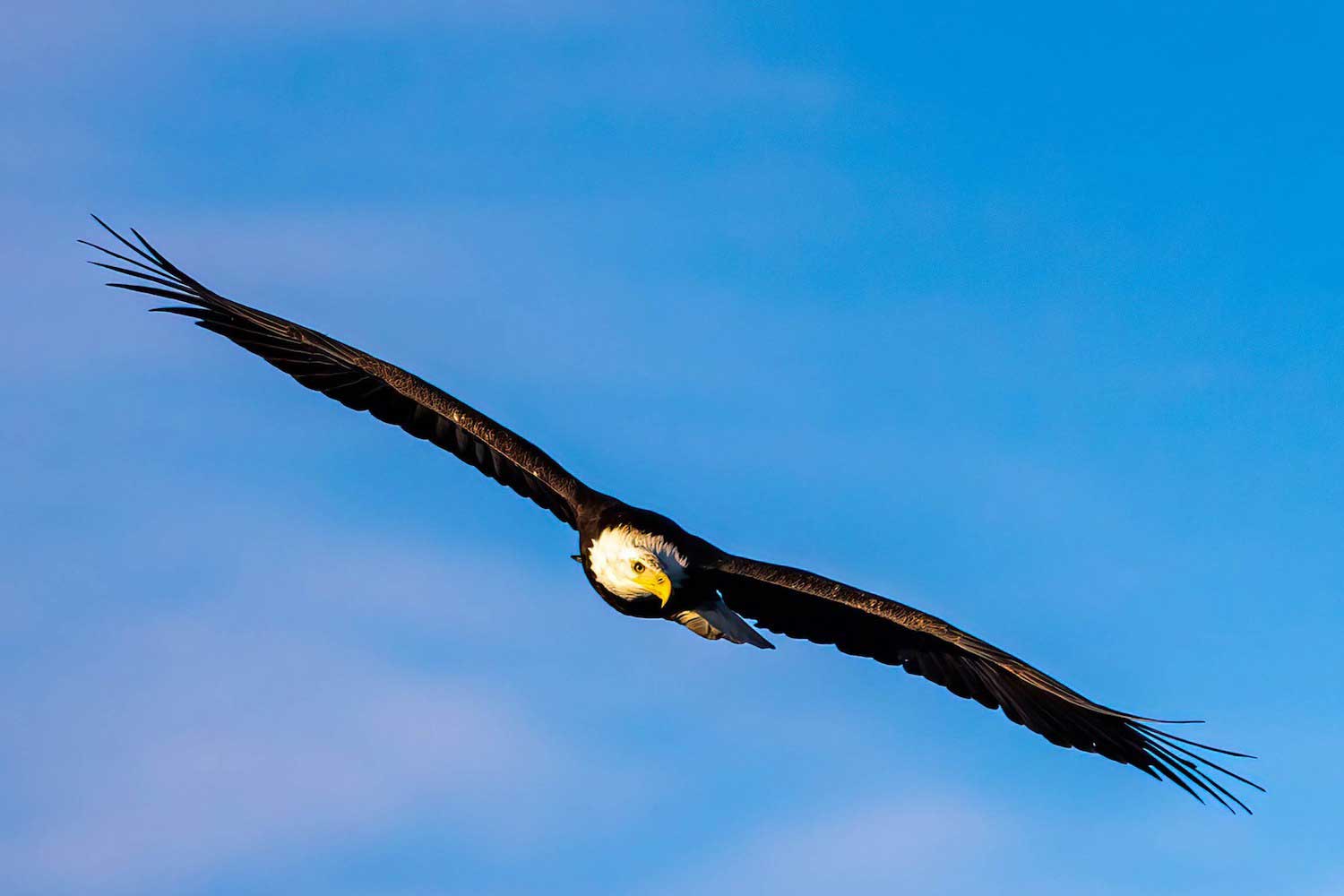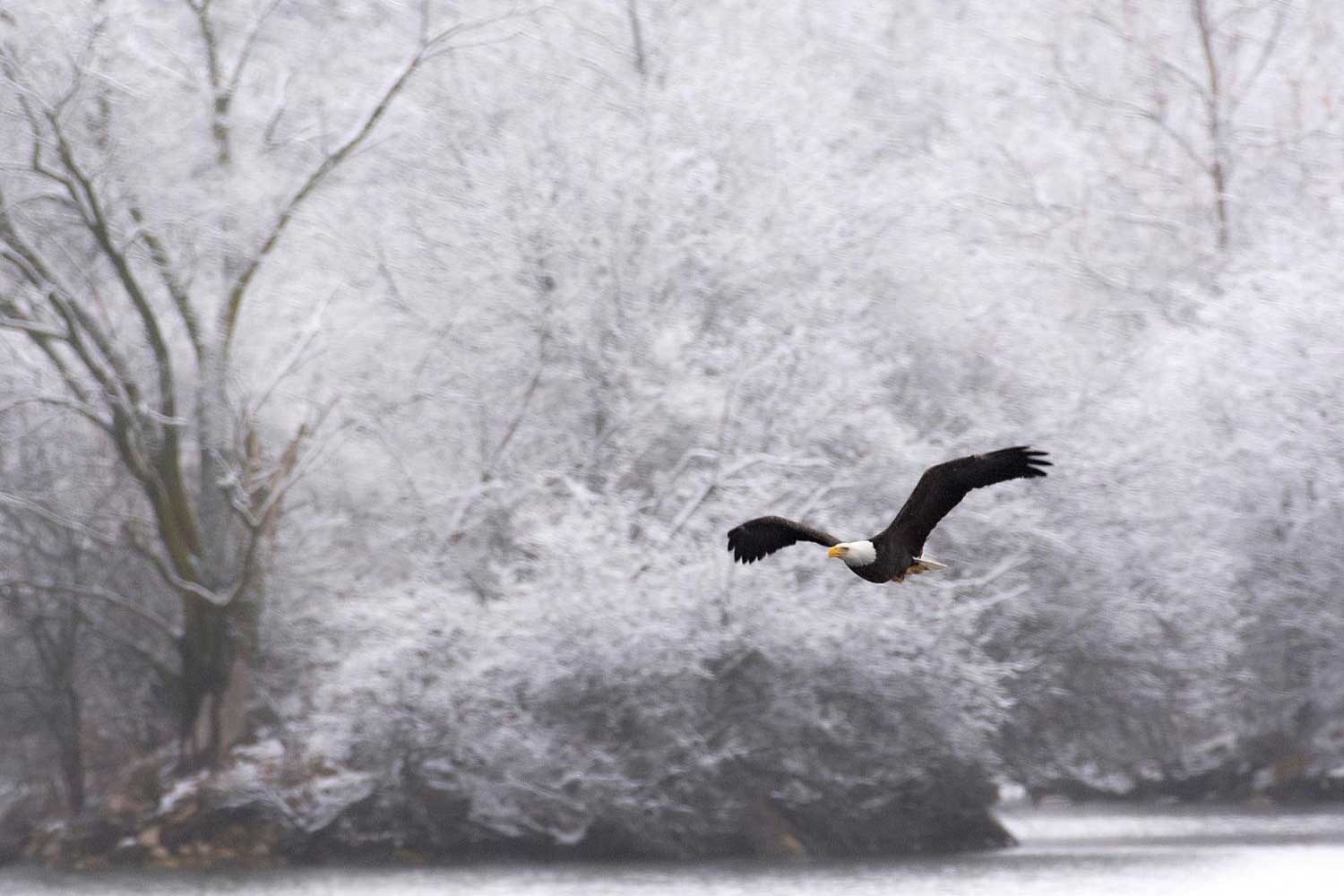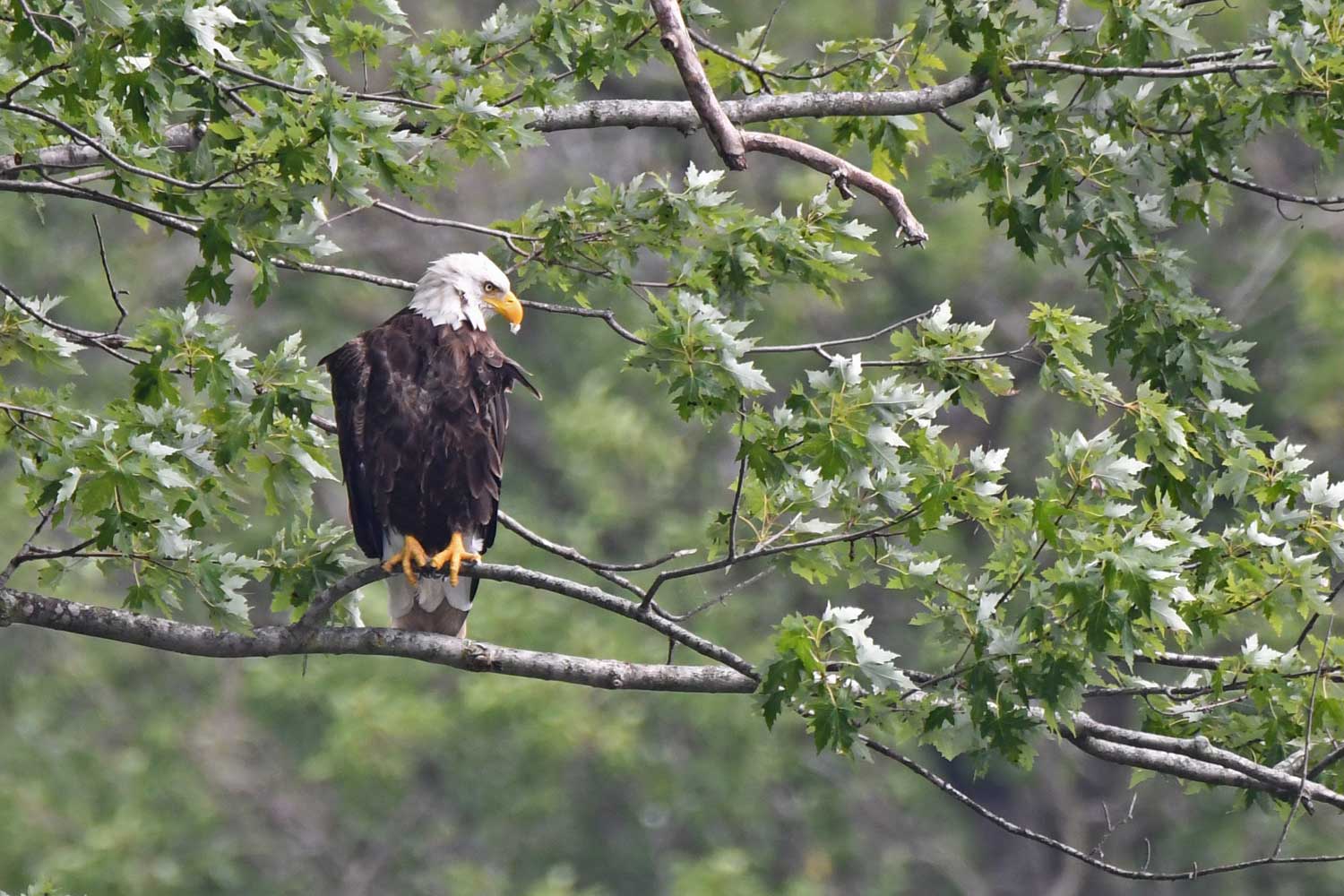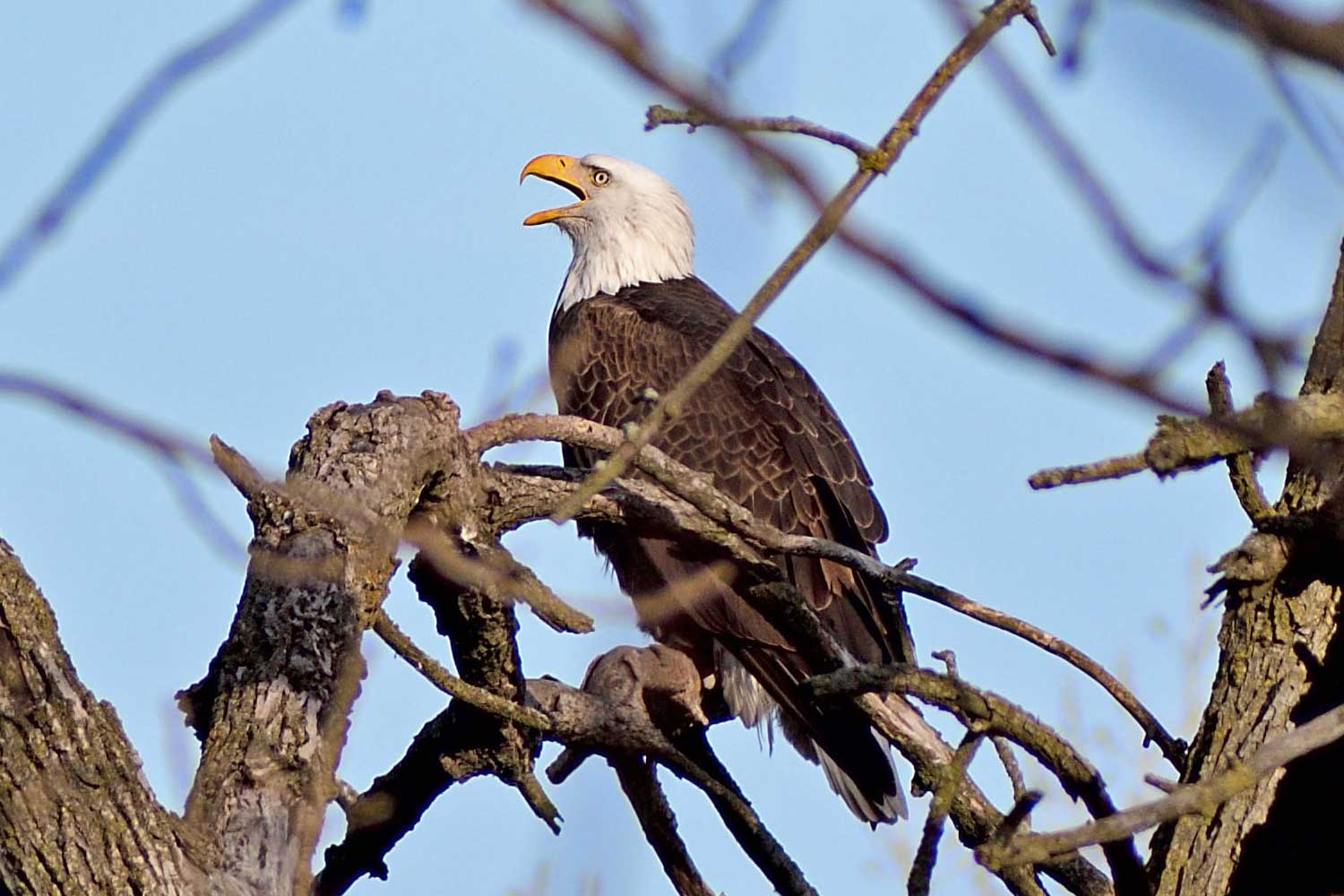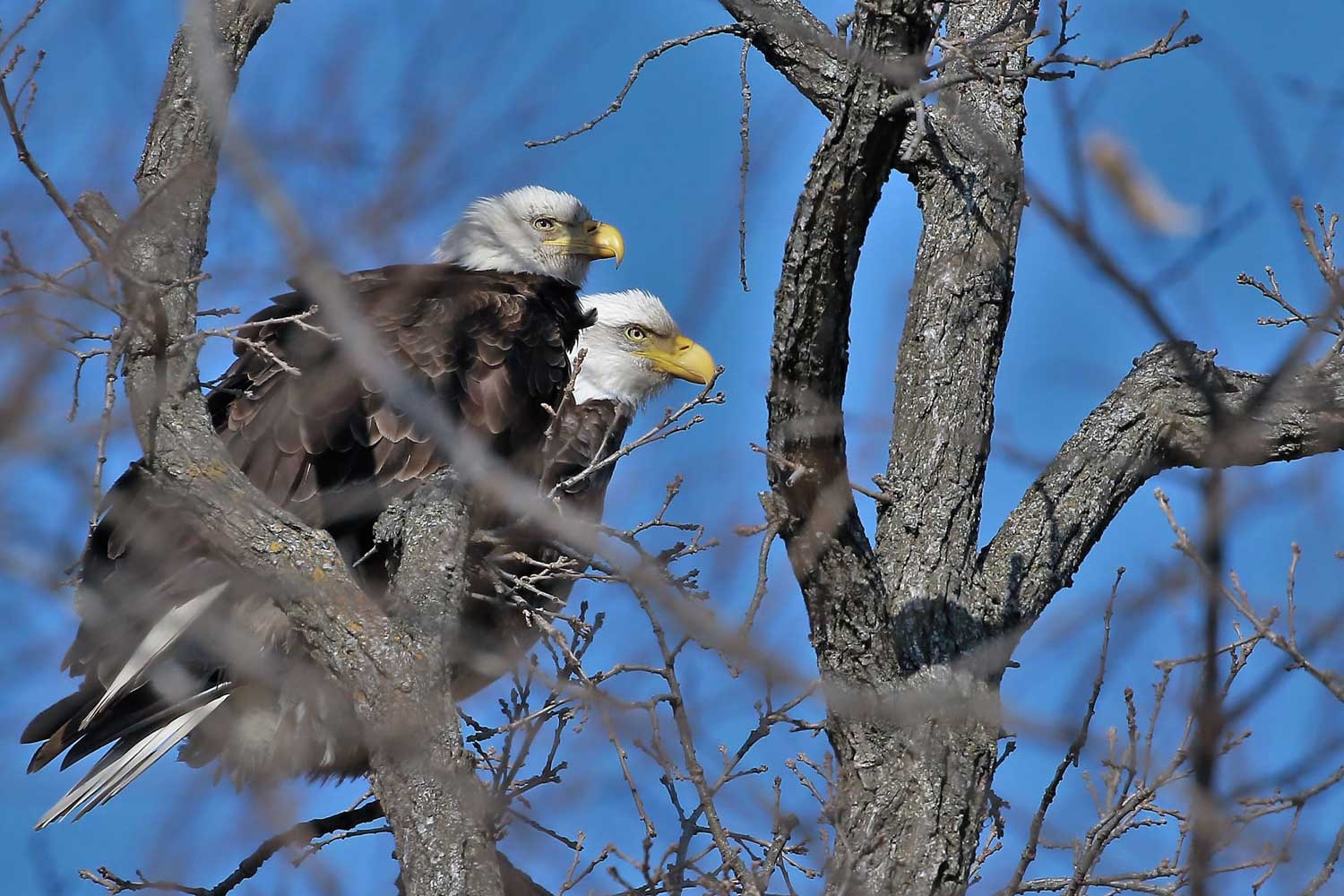Bald eagle numbers have quadrupled since 2009 thanks to conservation effort
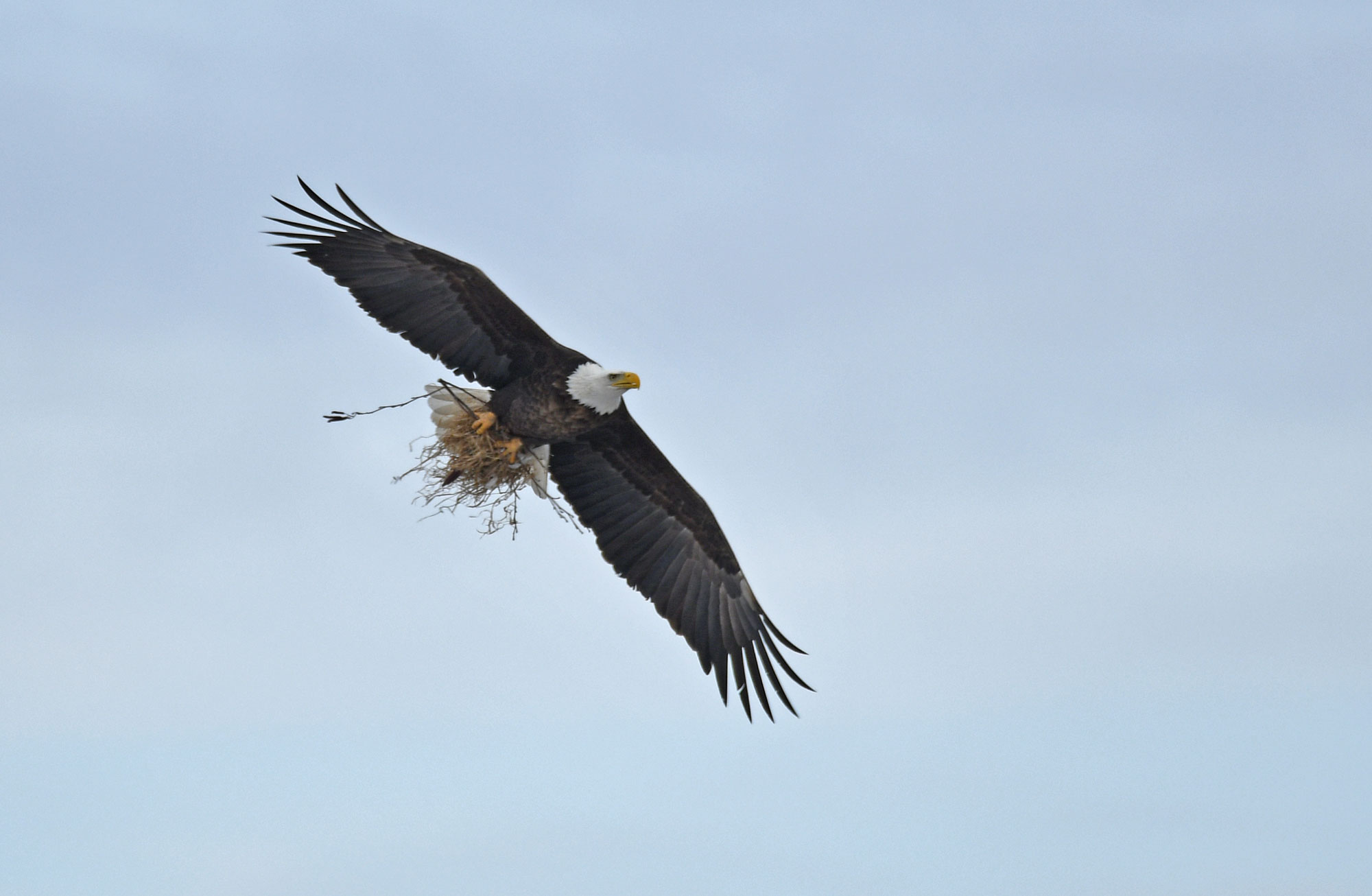
Our national emblem is flying high these days thanks to successful conservation efforts that have allowed bald eagle populations to rebound and now thrive over the past few decades, the U.S. Department of the Interior announced.
The bald eagle population has quadrupled since 2009, according to a new report from the U.S. Fish and Wildlife Service. Today, there are an estimated 316,700 individual eagles and more than 71,400 nesting pairs of bald eagles in the 48 contiguous states.
That's a stunning increase from the 1960s, when bald eagles were on the brink of extinction. In 1963, the population reached an all-time low of 417 known nesting pairs in the 48 contiguous states, the Department of the Interior reports.
The eagle population plummeted in the years following World War II because of use of the pesticide dichloro-diphenyl-trichloroethane, commonly known as DDT. The pesticide accumulated in eagles, causing them to lay eggs with shells that were too weak for the embryos inside to properly develop. Eagles were not the only bird decimated by DDT. The peregrine falcon was also endangered and facing extinction because of the widespread use of the pesticide, the fish and wildlife service reports.
The U.S. Environmental Protection Agency banned the use of DDT in the United States in 1972, which set in motion conservation efforts aimed at helping the populations of both bald eagles and peregrine falcons to recover.
Both bald eagles and peregrine falcons were once protected by the Endangered Species Act, but their populations have sufficiently recovered that they no longer need those protections. The bald eagle was removed from the threatened and endangered species list in 2007, and the peregrine falcon was removed in 1999.
The rebounding bald eagle population is widely regarded as one of the most successful conservation efforts ever, but the work is not done.
“The recovery of the bald eagle is one of the most well-known conservation success stories of all time,” Martha Williams, principal deputy director of the U.S. Fish and Wildlife Service, said in a news release. “The Service continues to work with our partners in state and federal agencies, tribes, non-government organizations and with private landowners to ensure that our nation’s symbol continues to flourish.”
In Will County, we've seen evidence of the bald eagle population boom up close, with Rock Run Rookery Preserve in Joliet becoming a hot spot for sightings in winter. Other preserves where eagles are often spotted include Whalon Lake in Naperville, McKinley Woods in Channahon and Lake Renwick Preserve in Plainfield. This spring, Forest Preserve staff are also keeping an eye on a few active bald eagle nests. (The Forest Preserve District does not disclose nesting locations.)
Eagle spottings can be exciting and can cause people to flock to preserves they are known to frequent. However, bird-watchers should not do anything to disturb eagles or distract them from what they should be doing to successfully raise their young. Bald eagles in the United States are protected by both the Bald and Golden Eagle Protection Act, enacted in 1940, and the Migratory Bird Treaty Act, first enacted in 1918 and later amended to include birds of prey in the 1970s.
Here are some tips for safely viewing bald eagles and other birds:
- Persistence pays off. Looking for them in a preserve they’re known to frequent doesn’t guarantee that you’ll see one. They can move quickly over large distances.
- While mature adults are easily identifiable with the naked eye, binoculars dramatically enhance the experience.
- Do not attempt to get close to an eagle. Responsible bird-watching etiquette states that a birder’s presence should not change the behavior of a bird. If a bird is reacting to you, then you are too close. Causing birds to flush causes stress to the birds and puts them in danger.
- Remember, bald eagles don’t get their trademark white heads and tails until between their fourth and fifth years. Immature bald eagles are mostly brown and are sometimes confused with golden eagles, which are uncommon in Illinois.
